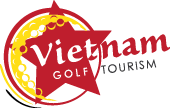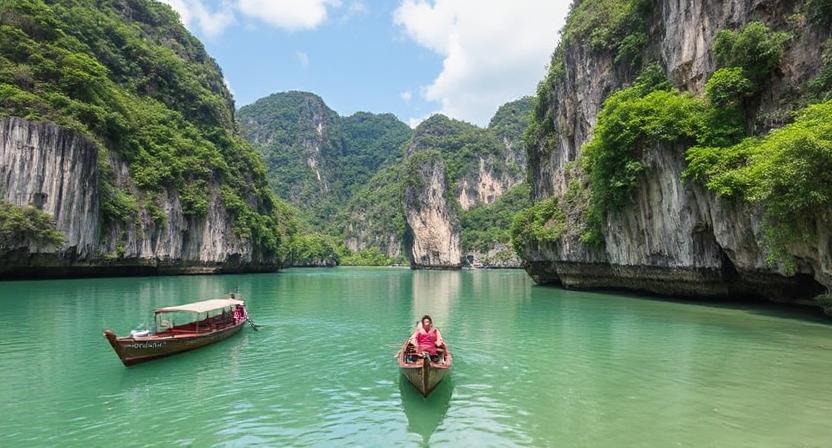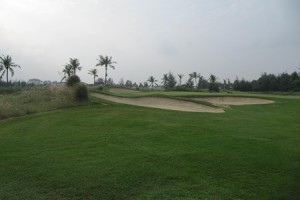Thailand is leading strategically in targeting various major markets to spearhead its tourism rebound and win back tourists from markets where tourist arrivals are dropping. China, Japan, South Korea, India, Saudi Arabia, and the Middle East have been seen as target areas to renew tourism streams into Thailand. Tourism authorities want to restore market confidence and re-establish the nation’s image as one of the world’s leading destinations for recreation, business, and medical tourism. The airline sector and tourism authorities are particularly trying to rekindle demand by launching focussed campaigns, special offers, and tailor-made travel packages to attract new consumers and returning visitors.
The Rise of Wellness and Medical Tourism in Thailand
Thailand’s tourism strategy places a significant emphasis on wellness tourism as a growth sector. With travelers increasingly seeking holistic experiences and health-focused vacations, Thailand is well-positioned to cater to this demand through its established infrastructure for medical tourism, spa resorts, and wellness retreats.
The country’s luxury wellness offerings include spa treatments, yoga retreats, and detox programs that allow tourists to rejuvenate in world-class settings. Medical tourism is also a key pillar, with high-quality healthcare services being offered at competitive prices. These services include treatments ranging from cosmetic surgery and dental care to rehabilitation therapies, making Thailand a leading destination for health-conscious travelers from around the world.
Diversifying Tourism Offerings: Sustainable and Eco-Tourism Growth
Thailand’s sustainable tourism initiatives are integral to the country’s strategy for long-term growth. The government is focusing on eco-tourism and community-based tourism, which not only offers unique travel experiences but also ensures the protection of natural resources and supports local economies.
Thailand’s national parks, wildlife sanctuaries, and marine conservation areas are at the heart of its eco-tourism efforts. By promoting sustainable travel practices and encouraging visitors to explore nature responsibly, Thailand is positioning itself as a leader in green tourism. This includes the promotion of low-carbon activities, such as eco-friendly boat tours and sustainable trekking, that allow visitors to experience the country’s natural beauty while minimizing their environmental impact.
Cultural Tourism: Leveraging Thailand’s Heritage and Traditions
In addition to wellness tourism, Thailand is also emphasizing cultural tourism as a critical part of its recovery strategy. The country’s rich cultural heritage, which includes ancient temples, royal palaces, traditional festivals, and arts and crafts, makes it a prime destination for those seeking authentic cultural experiences.
Key regions such as Ayutthaya, Chiang Mai, and Sukhothai offer visitors the opportunity to explore UNESCO World Heritage sites, ancient ruins, and vibrant cultural traditions. Festivals such as Songkran (Thai New Year) and Loy Krathong (Festival of Lights) provide an immersive experience, giving tourists a chance to participate in local rituals and celebrations.
By focusing on the authentic cultural experiences that Thailand offers, the tourism industry aims to attract tourists who are interested in learning about the country’s traditions, history, and heritage, fostering a deeper connection between visitors and the local community.
Attracting Global Business Travelers and Event Tourism
In addition to leisure tourism, Thailand is actively targeting the business tourism sector. The country is positioning itself as a hub for international conferences, corporate meetings, and exhibitions. With state-of-the-art venues such as the Queen Sirikit National Convention Center in Bangkok and a growing number of business hotels, Thailand is increasingly seen as a top destination for business events in Southeast Asia.
Moreover, Thailand is leveraging its role as the host of international sporting events, such as the SEA Games and Asian Games, to further boost its event tourism sector. The Riyadh Season 2025 and other international sporting events, like golf tournaments and boxing championships, provide excellent opportunities for tourism growth, attracting sports fans and business professionals from around the globe.
Focus on Regional Tourism: Connecting Thailand with Neighboring Markets
Thailand’s tourism recovery strategy also emphasizes regional tourism within Southeast Asia. Neighboring countries such as Laos, Cambodia, Myanmar, and Vietnam present significant potential for cross-border travel. With improved transportation links, such as train services and air routes, Thailand aims to make it easier for travelers from Southeast Asia to visit the country.
By improving regional accessibility, Thailand hopes to capture a larger share of Southeast Asian travelers, who increasingly seek affordable travel options and local cultural experiences within the region. Expanding regional tourism will help strengthen Thailand’s position as a key destination for cross-border travel and encourage multi-country itineraries for travelers.
Thailand’s Tourism Marketing Campaigns: Engaging Global Audiences
Thailand’s tourism marketing campaigns are crucial in attracting visitors from around the world. The government has invested heavily in digital marketing, including social media outreach, influencer collaborations, and targeted ads aimed at specific travel segments. The country has been actively engaging with emerging markets in India, China, and the Middle East, where travelers are increasingly seeking experiential travel and wellness tourism.
By focusing on digital engagement and innovative storytelling, Thailand’s tourism industry is able to reach younger generations, digital nomads, and family travelers, all while building a strong brand identity in the global tourism market. The country’s ability to adapt to changing trends in the digital travel space ensures that its tourism sector remains competitive and attractive to a diverse range of visitors.
The Road to Recovery: Thailand’s Resilience and Long-Term Goals
Despite the setbacks faced by the tourism industry, Thailand is demonstrating resilience through strategic efforts to grow and diversify its tourism offerings. From medical tourism to wellness retreats, cultural experiences, and eco-tourism, Thailand is working to build a robust and sustainable tourism sector that attracts global visitors year-round.
The government’s long-term goals include increasing international arrivals to 40 million tourists by 2030 while ensuring that tourism growth is balanced with sustainable development. By expanding its tourism infrastructure, targeting new markets, and enhancing the visitor experience, Thailand will continue to strengthen its reputation as one of the world’s most sought-after tourism destinations.
A Bright Future for Thailand’s Tourism Sector
Thailand’s initiatives to promote inbound tourism and increase its international penetration will go a long way in shaping the tourism economy of the country. Targeting priority markets, sustainable tourism practices, and cultural as well as wellness product offerings are how Thailand is making itself a choice destination for tourists from across the globe. The emphasis of the government on diversification, innovation, and regional tourism will fuel long-term growth, keeping Thailand a top tourism destination in Southeast Asia and the world.
The post Thailand Boosts Tourism Recovery with Focus on Key Markets, Sustainability With Cultural and Wellness Experiences to Drive Long-Term Growth appeared first on Travel And Tour World.
The article "Thailand Boosts Tourism Recovery with Focus on Key Markets, Sustainability With Cultural and Wellness Experiences to Drive Long-Term Growth" was originally published on https://www.travelandtourworld.com/news/article/thailand-boosts-tourism-recovery-with-focus-on-key-markets-sustainability-with-cultural-and-wellness-experiences-to-drive-long-term-growth/





